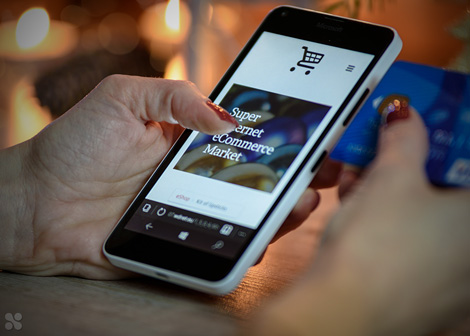Facebook
Twitter
LinkedIn
As the manager of an e-commerce website, perhaps hosted on a cloud platform, you’ve undoubtedly noticed that maintaining a reasonable conversion rate—translated into the actual sale of the products—can often turn out to be pretty complicated.
While the site architecture is fundamental to complying with Google’s quality standards (and meeting the expectations of website visitors), it can’t generate conversions alone. It’s essential that you also analyze the journey that website visitors go through before buying. Unfortunately, most e-commerce owners tend to underestimate this vital process, with lousy effects on their bottom line. In short, a high number of website visitors to your online store can be entirely useless unless you can describe and measure the efficiency of the so-called conversion funnel.

In practical terms, optimizing a funnel allows you to track, manage, and monitor the average behavior of your website visitors, identifying tipping points and any bottlenecks in the buyers’ journey. The easiest way to achieve this is by drawing information from the analytics of your e-commerce website, which can be easily set up to provide useful data.
However, there’s no one-size-fits-all recipe for conversion funnel optimization. Each e-commerce is unique and has different problems and strengths that could influence outcomes. Under this light, analyzing user behavior becomes the most critical element of your strategy.
If you want to improve your conversion funnel, you should focus on the “journey” that your visitors make—from the first time they arrive on your e-commerce site to the moment they make a purchase. It’s a path that includes an intricate web of factors. For instance, users don’t often become customers upon their first visit—they’re more often looking for an initial understanding of the offering so they can then compare your prices with those of your competitors. Most website visitors will return to your site and/or engage with your brand several times before actually buying.
Even people who have already made a buying decision could interrupt the process due to some unforeseen blockage factors. For example, if you haven’t optimized your e-commerce for mobile, smartphone users will find it difficult or impossible to complete the purchase. Therefore, eliminating the blockages becomes a tricky and vital operation to your success.

The journey taken by potential customers during the buying process starts with the awareness stage—when people learn about the existence of a specific product—and ends with the long-awaited buying decision. The process explains the name of the funnel: from a significant number of people who arrive on the site, only a few will become real buyers. That’s because people will be “filtered” with various intermediate stages.
The funnel is constructed out of three stages. The first is known as TOFU (Top Of the FUnnel). It targets the majority of website visitors and should include engagement through site content that’s dedicated to newbies (for example, FAQs or articles in which you present the products that you sell).
The second stage is called MOFU (Middle Of the FUnnel) and regards the passage from website visitor to potential customer (for example, when someone subscribes to your newsletter).
Finally, we have the third stage, called BOFU (Bottom Of the FUnnel). It refers to the crucial moment in which the prospect decides to buy your product and becomes a buyer by making a purchase—and hopefully turns into a loyal customer.
The ugly truth is that this model for optimizing the funnel isn’t a universal solution that can be applied to all e-commerce websites. The conversion path is, in fact, sometimes more complicated than a simple “funnel”. However, it can still provide you with a solid guideline to optimize your conversion rates.
As you move on with your e-commerce business, you’ll see that various factors can disturb users’ interactions with your site and influence their perception. Sometimes, they’re positive (when someone gets to your website through word of mouth, the buying decision could come faster) or negative (a user can’t buy because your site doesn’t support a specific credit card).
In short, optimizing the conversion funnel on your website involves an audit of your e-commerce site. For the best chances to succeed, you should review everything, from the website architecture to its functionality, and define how and where you can improve your current assets and operations, as it’s the most powerful way to improve the purchase rate of your e-commerce.
Fill out the form and one of our experts will contact you within 24 hours: we look forward to meeting you!

Via Chambery 93/107-V 10142 – Torino, Italy
+39 011.5097366 | marketing@criticalcase.com
Corso Elvezia 25 – 6900 Lugano, Switzerland
+39 011.5097366 | marketing@criticalcase.com
124 City Road London, EC1V 2NX, London, United Kigdom |marketing@criticalcase.com
Iscriviti alla nostra newsletter per restare aggiornato sulle novità dell’universo Criticalcase